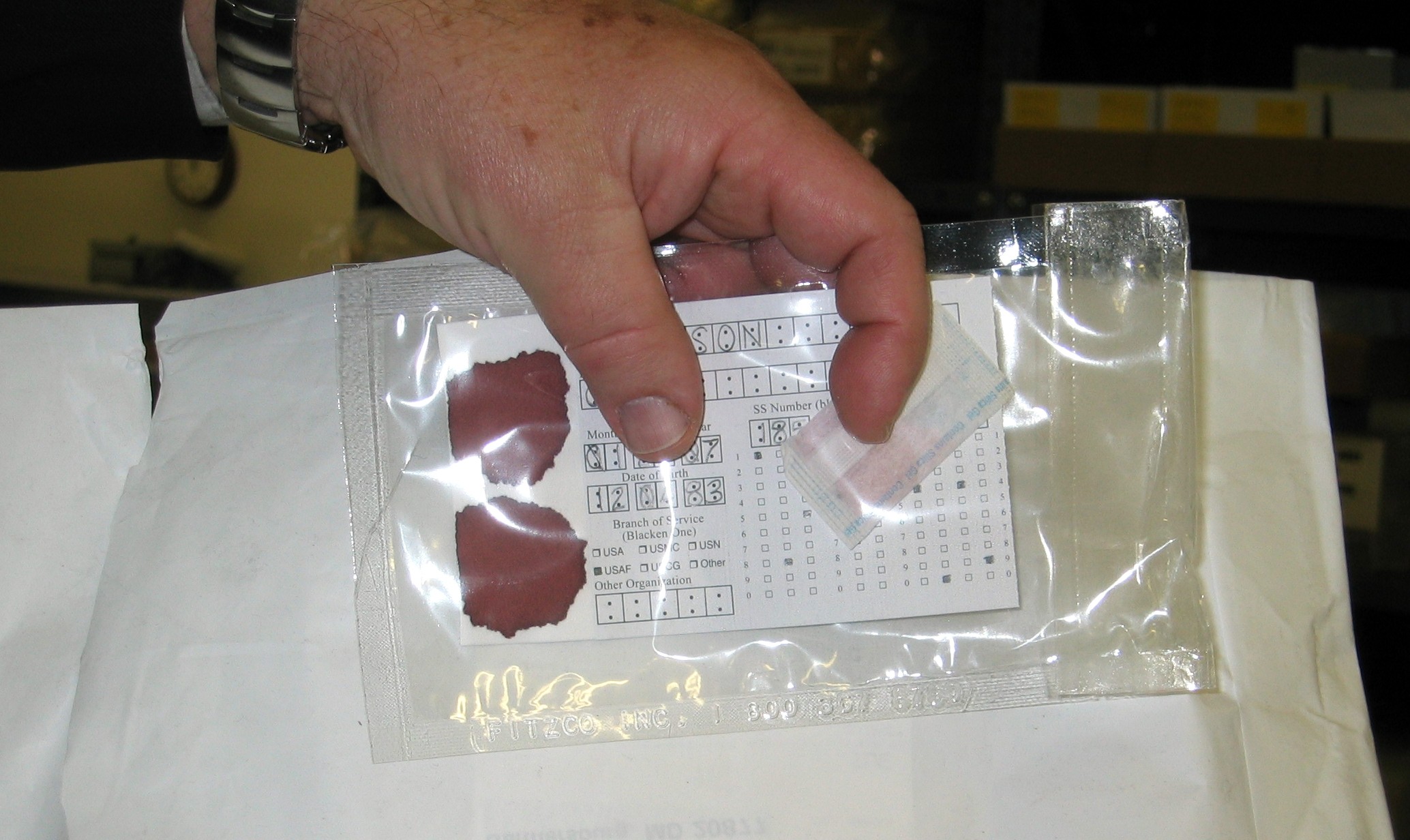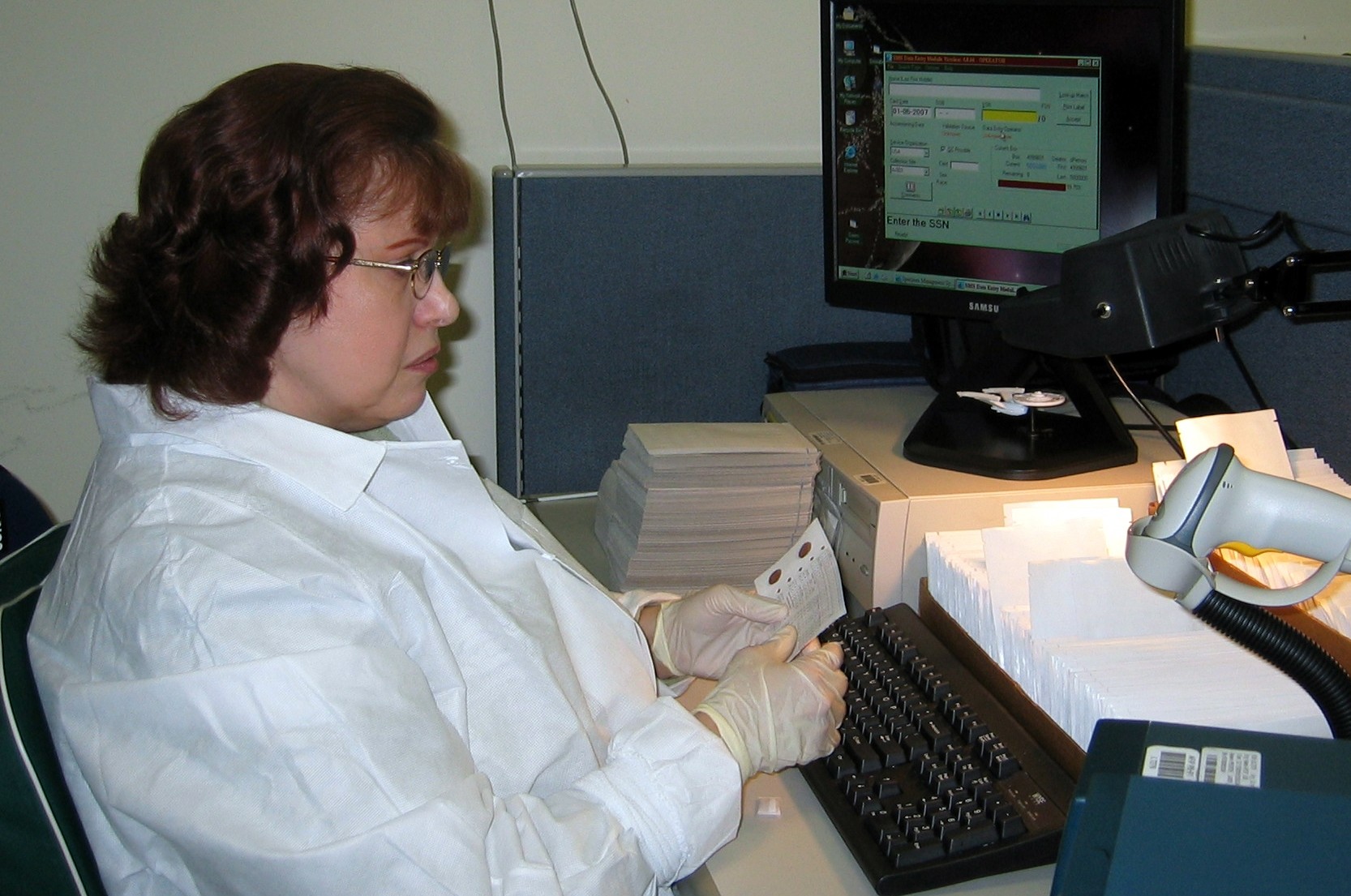GAITHERSBURG, Md., Jan. 24, 2007 - Deep within a nondescript warehouse in this Washington suburb lie millions of blood-smeared cardboard cards that hold the key to every servicemember's unique personal identity, captured in DNA.
DNA is a substance within every person's cells that provides a personal blueprint, known as a DNA profile. Anyone who watches TV crime shows is likely to have seen police use a suspect's DNA profile to link him to a crime.
The Defense Department is using the same principle to ensure that if a soldier, sailor, airman, Marine or Coast Guardsman is ever killed in service, his or her remains will never go unidentified, explained James Canik, deputy director of the Department of Defense DNA Registry.
The goal, he said, is to never again have to bury a U.S. servicemember in a "Tomb of the Unknowns" or to keep families wondering about the fate of their loved ones.
"We're here for the families," Canik said during a joint interview yesterday with American Forces Press Service and the Pentagon Channel. "Our job, if a servicemember is killed, is to be sure we are able to identify them and get them home to their families."
DoD has been building its DNA registry since 1992, shortly after breakthroughs in DNA technologies made it feasible to use blood samples or saliva swipes to make positive identifications.
Since then, DoD has amassed the world's largest inventory of DNA samples -- adding the 5 millionth sample, from an airmen based at Maxwell Air Force Base, Ala., to its collection just yesterday. That's in addition to samples from deployable DoD civilians, as well as some State Department employees.
Canik explained the procedure that gets samples here from 1,200 collection sites around the world. Blood samples are collected from every servicemember who enters initial military training and often when troops undergo physicals and before they deploy overseas. They're smeared on a card with the servicemember's name, Social Security number and other identification, then shipped here to become part of the DNA registry.
In 2006 alone, almost 302,000 new samples arrived for storage. Technicians logged them in, vacuum sealed them in individual pouches to remove any air and keep out any contaminants, then stored them in a huge, two-story freezer set to minus 20 degrees.
Each specimen will remain in the inventory for 50 years, Canik said, unless a donor who has left the military and finished his or her service obligation asks to have it destroyed sooner.
Strict safeguards ensure the collection is used only for identification purposes, Canik said. Only twice in the last 16 years was the registry tapped by law enforcement, under special federal court orders for investigations involving felony crimes.
As another precaution, he said, samples in the DoD registry get "typed" only when the donor dies or in limited numbers for quality control. "We have very tight controls on these samples and how they are used," he said. "We go to great lengths to guard the privacy rights of our servicemembers."
While most specimens will remain untouched for the 50 years they are stored here, some will end up providing a vital key to identifying a servicemember's remains, particularly when identifications aren't possible using standard fingerprints or dental records, Canik explained.
"We pride ourselves in being like a group of firemen," he said. "We're there, and when the need arises, we answer the call."
The registry is particularly valuable in the cases of traumatic injuries, such as a plane crash or massive explosions, he said. In these cases, the people involved often can't be identified by other means, and several sets of remains may be mixed together.
"In many of those cases, DNA may be the lynchpin in making that identification," Canik said. "DNA becomes the sole tool we have so we can return them to their familes."
Every time a U.S. servicemember is killed, pathologists at the Armed Forces Medical Examiner's Office in nearby Rockville, Md., pull the servicemember's DNA sample to confirm -- or reconfirm -- the identity, he said. The results usually are determined within 24 hours.
In addition to providing DNA samples to identify troops serving today, the DoD DNA Registry is helping to unlock the mystery of missing servicemembers from past conflicts, Canik said.
Working closely with the Joint POW/MIA Accounting Command, with headquarters at Hickam Air Force Base, Hawaii, the staff at the DNA Registry is applying new technology to help identify remains of troops killed during the Vietnam War, Korean War, World War II and even earlier conflicts.
One of the newest advances in DNA technology, using mitochondrial DNA that's stored in the body's cytoplasm, is proving particularly helpful in identifying remains that have degraded over time and due to environmental exposure, Canik said.
"When people ask what it's like to identify someone who died long before, I tell them that it's just like a current death case," he said. "The loss and the emotion are all there, and you see families react in the same way, knowing that they're finally able to put things to rest."
Whether a servicemember died decades ago or within the last week, Canik said, there's a deep gratification in helping to bring answers to the families left behind.
"That's a driving force behind why we are here," he said. "It's never an easy situation, but the families deserve an answer. And we do our very best so that we can help bring them closure and, in some small way, some comfort."




Social Sharing